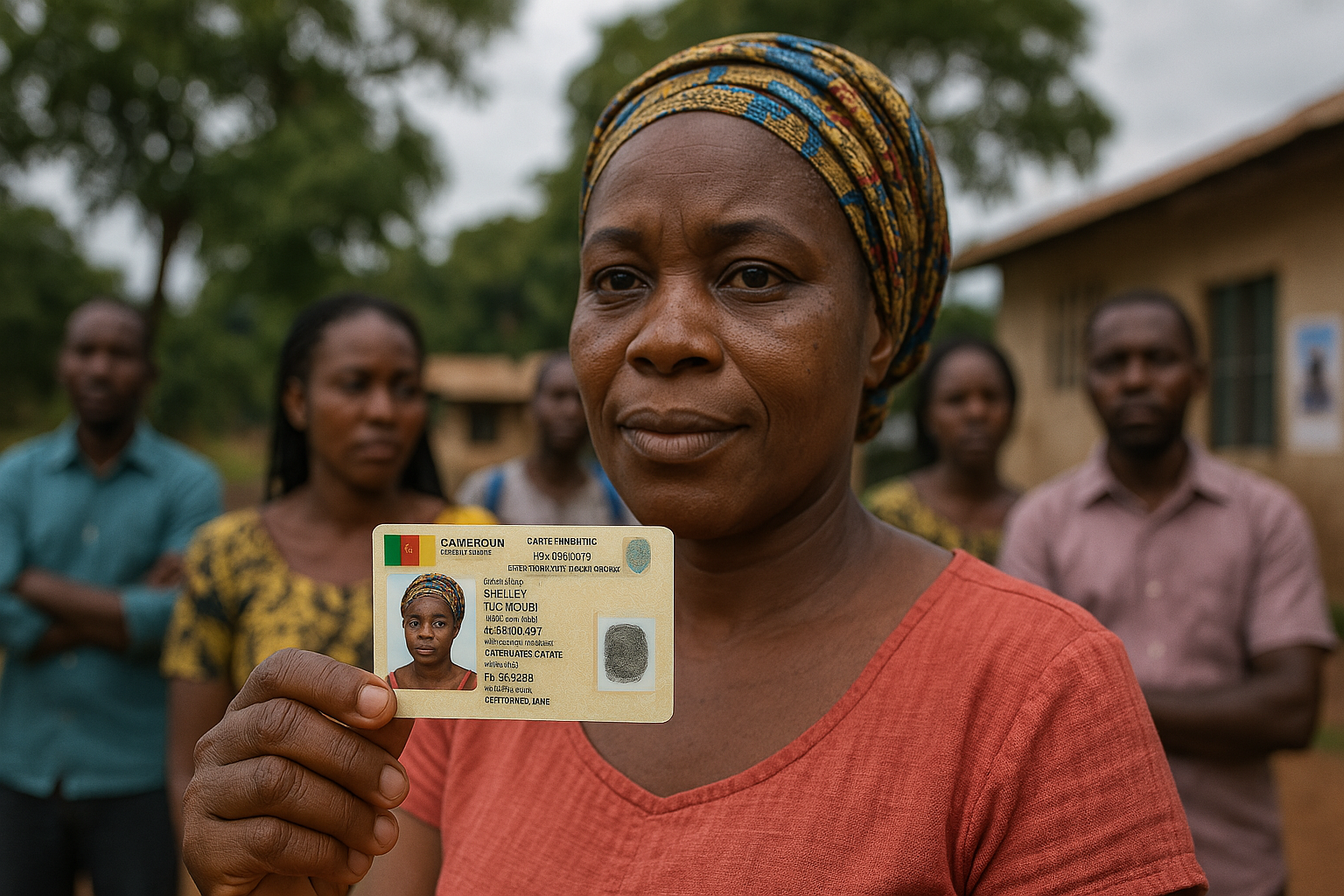Cameroon Launches Biometric ID Cards for Refugees, Enhancing Access to Services
The biometric identity cards introduced by the government not only provide refugees with legal recognition but also offer them a much-needed pathway to self-reliance and stability.

- Country:
- Cameroon
The Government of Cameroon has made significant strides in enhancing the inclusion of refugees within its borders by introducing a national framework to issue identity documents, including biometric identity cards. This marks a pivotal moment for over 1.4 million forcibly displaced persons in the country, which includes 430,000 refugees and nearly 1 million internally displaced persons (IDPs). These initiatives reflect a growing commitment to improving the lives of displaced people by ensuring their access to basic services, such as healthcare, education, and employment.
The new framework, introduced in February 2025, seeks to streamline the process of issuing identification documents, such as residence permits, national disability cards, and biometric identity cards, to refugees in Cameroon. These documents serve not only as proof of identity but also provide refugees with the legal recognition necessary to access essential services. By enhancing the ability of refugees to participate in society, this move helps facilitate their integration and long-term stability in the host country.
Cameroon’s actions align with global efforts to address forced displacement and displacement-related challenges. Yvette Muhimpundu, the UNHCR Representative in Cameroon, expressed her support for the government's efforts, emphasizing the importance of identity documents for forcibly displaced people. “We are proud of the results of our collaboration with the Government of Cameroon,” Muhimpundu stated. “This decree is a testament to Cameroon’s dedication to upholding the principles of the Global Compact on Refugees and ensuring that refugees have access to essential identification documents.”
The biometric identity cards introduced by the government not only provide refugees with legal recognition but also offer them a much-needed pathway to self-reliance and stability. For many, these documents represent a lifeline, granting them access to education, healthcare, finance, and employment opportunities. This is especially critical for refugees who have been living in limbo for years without official identification, which often results in limited access to basic services or opportunities to contribute to the economy.
For refugees like Shelley Teckombi, a 36-year-old woman from the Central African Republic who has been living in Cameroon for seven years, the biometric ID card is a game-changer. Shelley fled violence in her home country and sought refuge in the Eastern community of Mandjou. Prior to receiving her ID card, she lived in fear of arrest and struggled to access basic services. “Having a legal identity gives me the peace of mind I need,” Shelley shared. “Now, I can go to school, work, get healthcare, and travel without fear. I can finally build a better life for myself and my family.”
The biometric identification program has already helped provide legal identification to 25,000 refugees in Cameroon, which is a significant achievement. By offering refugees access to basic services and economic opportunities, this initiative is playing a key role in facilitating their integration into local communities and enabling them to contribute to the country’s growth and development.
However, despite the progress made by the Government of Cameroon, the success of refugee inclusion efforts remains at risk without continued international support. UNHCR and other partners emphasize that sustained funding is crucial to ensure the long-term success of these programs. While Cameroon’s efforts are commendable, the financial gap remains a significant challenge. Without adequate resources, refugees and internally displaced persons may continue to face difficulties in accessing critical services that are vital for their integration and self-reliance.
The global displacement crisis is at an all-time high, with millions of people forcibly displaced due to conflict, violence, and persecution. In such a challenging environment, it is essential for host governments, like Cameroon, to take bold actions to include refugees and IDPs in their societies. At the same time, international support remains crucial in helping governments meet the needs of displaced populations and provide them with the resources to rebuild their lives.
The partnership between the Government of Cameroon and UNHCR is a vital example of how collaboration between national authorities, international organizations, and local communities can create lasting solutions for forcibly displaced people. But this success cannot be sustained without ongoing global commitment. For the refugees and internally displaced persons living in Cameroon, the road to self-reliance and stability is achievable, but it requires the continued backing of the international community.
As the world grapples with a rising number of displaced people, Cameroon’s example offers a promising model for other countries facing similar challenges. By prioritizing refugee inclusion and ensuring that displaced populations are recognized and have access to essential services, Cameroon is setting a precedent for the kind of holistic, inclusive approach needed to address forced displacement worldwide. The journey towards lasting solutions for displaced people is long, but with sustained effort and international cooperation, it is possible to create a future where refugees and IDPs can live with dignity, safety, and opportunity.
- READ MORE ON:
- Cameroon
- Biometric ID Cards
- Yvette Muhimpundu
- UNHCR










